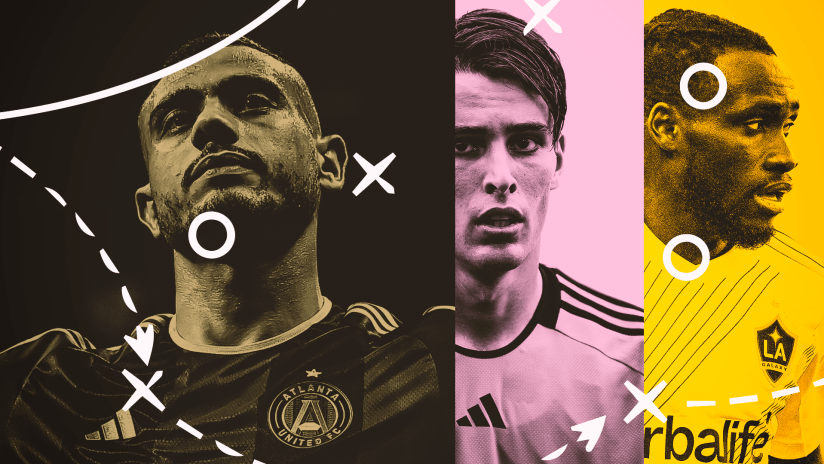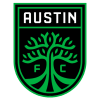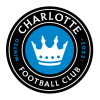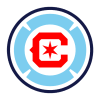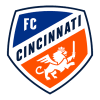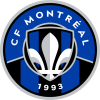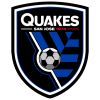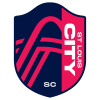We’re getting closer and closer, people.
With every passing matchday, we’re gathering more information to the point where we can have a few defensible takes on each MLS team. So today, I’m taking stock of all 29 teams in the league.
Here’s one big thing we’ve learned about every club.
What we’ve learned: Giorgos Giakoumakis has something extra in his bag
I’ve been thinking about this pass for almost two weeks now (yes, I know I need help):
Atlanta United’s star No. 9 has continued his elite goal-scoring – with Thiago Almada behind him, that will not change at any point soon. What’s stood out to me about Giakoumakis this year, though, is he’s not just scoring goals. He’s also playing more and better passes. According to FBref, Giakoumakis is hitting two more passes per 90 than he did in 2023 (14.5 vs. 12.5) and is hitting almost an entire extra pass into the penalty area per 90.
His best skill will always be exploiting space inside the 18-yard box, but Giakoumakis showing there’s another club in his bag is a win for an already dynamic attack.
What we’ve learned: The attack hasn’t improved
Sure, Diego Rubio and Jáder Obrian were savvy intra-league pickups, but without any transformational offseason signings and with an early-season injury to Sebastián Driussi, Austin FC have struggled in the final third even more than they did last year. Thus far, 40% of Austin’s games have ended without taking a shot from inside the 18-yard box. Let that sink in for a second.
Driussi will help things when he’s back to full fitness. But outside of some transfer wheeling and dealing, it will be up to Josh Wolff to find some help in the margins of his tactical setup.
What we’ve learned: Sometimes simplicity is key
The big early story for Charlotte FC is how quickly Dean Smith’s simpler, transition-heavy approach has stabilized their squad. Under former manager Christian Lattanzio, Charlotte relied on creative buildup play and off-ball rotations to push into the final third. The talent level, however, wasn’t high enough to make that system a success. Smith has simplified things and a few early results have followed.
What we’ve learned: Nothing matters until the chance creation issue is resolved
With moves along the backline, adding Kellyn Acosta in midfield, and breaking the club’s transfer fee record to sign striker Hugo Cuypers, there was plenty to like about the Fire’s offseason. Five games and five points into the season, however, and there’s still a glaring deficiency: chance creation.
Xherdan Shaqiri’s inconsistency mixed with Brian Gutiérrez’s youth does not a reliable path to Cuypers make. Without a provider in the final third (or a grand tactical approach Frank Klopas isn’t bringing to the table), all of Chicago’s moves end up looking like fringe additions – even Cuypers, who is an excellent striker.
There’s an open DP spot, so you’d have to imagine the front office is looking at an attacking difference-maker from abroad.
What we’ve learned: They really can win one-goal games forever
FC Cincinnati won 14 games by a single goal in 2023. That was the most in the entire league. This year, all three of their wins have come with a one-goal edge. Maybe Pat Noonan has bribed the soccer gods to tip every tight game towards his team?
I still firmly believe Cincy's inability to put real distance between themselves and inferior opponents will catch up to them, so my tongue is in my cheek on this one. Yet, the real takeaway is the five new starters in Noonan’s preferred lineup are still trying to find their footing. It’s six new starters if you count Aaron Boupendza, who joined late last year. The talent level looks high. Now that has to translate into more dominant performances.

What we’ve learned: Chris Armas doesn’t want to play Red Bull ball
As a former RBNY manager, it was reasonable to expect Armas would bring an up-tempo, aggressive pressing and passing style to his new team. He, uh, isn’t doing that. According to Opta, the Rapids are just eighth in the league in passes allowed per defensive action (indicating they’re not a hyper-aggressive defensive team) and their possession sequences are longer than all but 10 teams in the league.
This is more of a patient possession and mid-block team than a Red Bull-esque team. Those teams are a dime-a-dozen in MLS, which makes Armas’ choice an interesting one when Colorado need some sort of differentiator.
What we’ve learned: An offseason didn’t help prepare their opponents
The biggest worry for the Crew coming into 2024 was opponents would no longer fear them. After a season of Wilfried Nancy and some elite talent in Columbus, everyone around MLS had either seen or experienced the new-look Crew. That could, in theory, detract from their on-field edge.
Not so. Columbus still look dominant. The passing is sharp. The off-ball movement is even sharper. Cucho Hernández still looks like a Landon Donovan MLS MVP candidate. This team is incredibly legit.
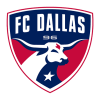
What we’ve learned: Plenty can go wrong all at once
Let’s run through the checklist, shall we?
- The outside center backs are struggling, raising questions about Nico Estévez’s new 3-4-3 shape.
- The first-choice midfield pairing can’t stay on the field.
- Petar Musa and Jesús Ferreira don't have chemistry yet.
Now, I expect that last issue to fade over time. But the first two problems? Those are season-defining issues for a team aspiring to push towards the top of the Western Conference. Paxton Pomykal (knee) is already out for the year. Color me skeptical that things will get dramatically better.

What we’ve learned: This team won’t win the Wooden Spoon
Before the season started, that seemed like a possibility when D.C. didn't swing big on a third DP over the winter (all respect to Matti Peltola). But with fresh blood in the front office and on the sidelines in the form of Troy Lesesne, United are causing real problems for their opponents. They’re direct in the attack and committed to the press defensively. And they’ve adopted those defining traits without limiting Christian Benteke’s impact up top.
There’s way more to like about D.C. United through the first month of the season than I thought there would be.
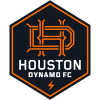
What we’ve learned: Ben Olsen is committed to the system
Ben Olsen has always been something of a pragmatist. With D.C. United, that looked a lot like playing against the ball and in transition. With Houston last year, it looked a lot like playing a possession-heavy style with Héctor Herrera, Coco Carrasquilla and Artur running the show. Play the style that fits your players. Makes sense.
With Herrera still out with a knee injury and plenty of other Dynamo players missing time, I wondered if Olsen would shift back to a more conservative attacking approach. That hasn’t happened. Only two teams have held more of the ball than Houston and their 56.8% possession in 2024.
The Houston Dynamo are a 3-2-5, ball-heavy team now.
What we’ve learned: The real LAFC will arrive in the summer
With reports linking Olivier Giroud to LAFC and two DP spots open next to Dénis Bouanga, it’s hard to get a read on LAFC since they will look different by the summer. Still, there’s serious talent already in Los Angeles. The foundation is strong, even if the attacking performances have been hot and cold.
At some point before summertime, Steve Cherundolo might have to abandon the idea of only putting two natural forwards out onto the field. But after last weekend's 5-0 demolition of Nashville SC, that moment isn’t next matchday.
What we’ve learned: Joseph Paintsil is an MVP-caliber player
Allow me to present a few clips from one of the most dominant individual MLS performances I’ve ever seen:
Coming over from Belgium, the 26-year-old has thrived as a traditional right winger for the Galaxy. There’s not a single fullback in MLS who can hang with Paintsil for pace and there are few wingers in this league who match the quantity (or quality) of his service into the box.
Adding Paintsil to an attack with Riqui Puig and Dejan Joveljic is downright unfair – and that’s not even mentioning the Galaxy’s other new DP winger, Gabriel Pec, who made his first start over the weekend.
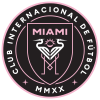
What we’ve learned: Stability is precious
Between international tournaments, continental competitions and natural rotation for the Barça Boys, we all knew there would be plenty of chopping and changing in Tata Martino’s lineup.
On top of all those things, trading DeAndre Yedlin to FC Cincinnati and losing Facundo Farias to a knee injury in preseason has created even more instability. Benjamin Cremaschi has been out injured, too. Federico Redondo, who occupies Farias’ U22 Initiative slot, arrived late. There’s still no new right-back signing (although Marcelo Weigandt is reportedly en route from Boca Juniors).
Inter Miami look incredible when all their best players are together in their best positions on the pitch. We just haven't seen that frequently enough.
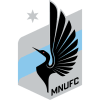
What we’ve learned: Pressing is on the menu
It hasn’t been a constant, but the Loons have spent plenty of time pressing high up the field in 2024.
According to Opta’s PPDA metric, they’ve pressed more outside of their defensive third than all but two teams in MLS. We haven’t seen much of what that press looks like with Emanuel Reynoso on the field. A knee injury suffered in training has prevented the Argentine star from starting through Matchday 6. But if Eric Ramsay can get Reynoso on board (or game-plan around him), Minnesota will be more tactically diverse than ever before.
What we’ve learned: Laurent Courtois can nail big decisions
Top-end talent is a concern in Montréal, but it’s hard not to be encouraged by what they’ve done in 2024. Four matches into their six-game road trip to start the year, they’ve got seven points. Along the way, we’ve seen an impressive balance of 3-4-3 possession play and 5-4-1 mid-block defending from Courtois’ team.
Courtois, who used to lead Columbus' MLS NEXT Pro-winning side, deserves real props for finding a strong tactical balance during his first-team opportunity.
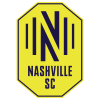
What we’ve learned: Flaws are becoming more visible
Hany Mukhtar’s attacking production has dipped over the last nine months. Only two teams in MLS move the ball into the box or the final third less than Nashville on a per-90-minute basis. Ball progression is a huge issue. And now the defense is cracking amid Walker Zimmerman's injuries, too? Gary Smith's team drew 2-2 with the LA Galaxy and lost by a club-record five goals against LAFC.
If Nashville can’t absorb pressure against the best in MLS (their longstanding identity), they won't compete for trophies.
What we’ve learned: The roster might not be strong enough
With an elite goalkeeper backing them up? This version of the New England Revolution could make noise in the Eastern Conference. But without a Matt Turner or Djordje Petrovic-level shot-stopper acting as an anchor? We don’t have any real evidence Henrich Ravas makes the Revs are a threat. Also, the press has been poor. Right back is still a problem. And so is the striker position.
Caleb Porter’s New England squad is one of only three in MLS still searching for their first win. It’s bound to come before too long, but don’t bet on many more coming after it.
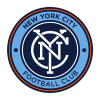
What we’ve learned: A 4-2-3-1 with Santi Rodríguez as the No. 10 is their best look
The best two games of New York City’s season have come with the team in a 4-2-3-1 shape with the Uruguayan pulling the strings: the 2-1 win (their only of the season) against Toronto FC and the first half of that 2-1 heartbreaking loss to the Portland Timbers. Nick Cushing’s team has struggled with virtually any other positional or player alignment.
There’s enough quality in the squad for NYCFC to do some damage. Why not stick with the basics in a fluid 4-2-3-1 and let talents like Rodríguez go to work?
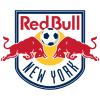
What we’ve learned: The Red Bulls don’t want to play Red Bull ball
Or, at least they want to add another dimension to their aggressive brand of soccer.
New manager Sandro Schwarz, helped by winter signings Emil Forsberg and Noah Eile, has transformed RBNY into a team that can run all over you and beat you with their creative passing. Everything is still a work in progress in Harrison, but it’s hard not to be enticed by the promise of a team with Red Bull principles that can also be the attacking protagonist.
RBNY’s ceiling is far higher in 2024 than 2023, thanks to a higher talent level and some newfound tactical convictions.
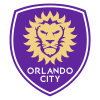
What we’ve learned: Oscar Pareja isn’t above some tinkering
We’ve seen a two-forward front (as opposed to the classic No. 10 roaming beneath a No. 9 look that’s come to be associated with Pareja) multiple times from Orlando City. Also, we’ve seen Nico Lodeiro drop into a No. 8 role just like Mauricio Pereyra did in the past.
Pareja isn’t afraid to tinker. Don’t be surprised if we see him go to more of a 4-4-2 with Luis Muriel and Duncan McGuire on the field together for stretches until McGuire finds a new club, potentially in the summer.

What we’ve learned: Quinn Sullivan can work as a shuttler
He’s played all over the attack for Philadelphia the last three seasons, but Quinn Sullivan is carving out a spot on the right side of Jim Curtin’s midfield diamond. The 20-year-old has quality in so many facets, bringing energy and mobility to a midfield that sometimes lacked them in 2023.
With Ale Bedoya taking on more of a rotation role, Sullivan looks like a solid option opposite fellow US youth international Jack McGlynn.
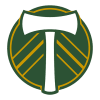
What we’ve learned: The potential is there
Last year, the Portland Timbers’ DPs not named Evander gave them exactly two goals in the regular season. With Yimmi Chara and Jaroslaw Niezgoda out of the picture, Portland’s front office could really elevate this team’s trophy chances with more high-impact players.
Jonathan Rodríguez just joined from Club América. And if Saturday’s game against Philly is anything to go off of (or, you know, thousands of minutes of Liga MX footage), Rodríguez will shine as the No. 9 in Phil Neville’s 4-2-3-1. Even outside of his consolation goal, the veteran striker did a fantastic job finding space inside the 18. He’s a threat, folks.
If another running mate comes to town, the Timbers will be poised to score goals aplenty.
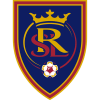
What we’ve learned: The youngsters are more than alright
Andrés Gómez, 21, has been filthy on the right wing for RSL, dominating opposing fullbacks on the dribble and making up for a lack of consistent delivery with sheer volume in the final third. He has two goals and two assists. Diego Luna, 20, hasn’t fully settled, not least because he was off with the U.S. Olympic team last week (but we all know he oozes quality). Then there’s Fidel Barajas, 17, who picked up two assists in his team’s 2-1 win at Vancouver on Saturday. His passing technique with that left foot is a delight.
Pablo Ruiz’s season-ending knee injury hurts, but the kids look ready to carry the load for Real Salt Lake.
What we’ve learned: They need (at least) one more piece
That piece might be Niko Tsakiris. The 18-year-old, who played as a sort of free No. 8 in Luchi Gonzalez’s three-man midfield against the Sounders on Saturday, was borderline electric. His vision and speed of play elevated San Jose’s possession play and helped make life easier for Cristian Espinoza out on the right wing.
Before Tsakiris entered the lineup (he was dealing with a groin injury), the Quakes were mostly anonymous in the attack. Though he was excellent in his season debut, it’s foolish to put too much pressure on the teenager. Filling that last DP spot would go a long way towards making San Jose a serious threat.
What we’ve learned: Opponents are getting better at exposing Jackson Ragen
Ragen is a lot of things – useful on the ball, comfortable in the backline, an asset in the air. But he’s not all that fleet of foot. That issue popped up in last year’s Audi MLS Cup Playoffs against LAFC and it’s popped up again this season.
Now, we have many examples of Ragen and Yeimar thriving together in the middle of Brain Schmetzer’s defense to be seriously worried about Seattle’s play against the ball. But until we see this team's attack return to health (and even when we do), it’s worth keeping half an eye on Ragen’s defense in scramble moments.
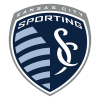
What we’ve learned: The attacking pieces aren’t enough
…at least not in the 4-3-3.
Before Saturday’s game against the LA Galaxy, no team in MLS touched the ball in the attacking penalty area less than SKC. Without much dynamism coming from Peter Vermes’ front three and without a true creator in midfield, Kansas City have looked flat for most of 2024.
The 4-2-3-1 shape that Vermes ran out against the Galaxy, though, could be a solution. Getting Alan Pulido and Willy Agada on the field together will make life more difficult for opposing center backs.
What we’ve learned: There’s work to do defensively
St. Louis know who they are under Bradley Carnell – they want to be aggressive and get in your face. At times this year, though, that aggression has faded when they face a sharp bit of buildup:
Only four teams in MLS have allowed more non-penalty xG per 90 than St. Louis, according to FBref. Their set-piece defense has been lacking, their open-play defense has been lacking, and, at times, their overall intensity has been lacking. They’re off to an OK start in 2024, but the defensive shape needs to tighten.
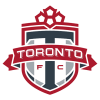
What we’ve learned: This thing might work?
If Lorenzo Insigne’s hamstring injury is serious, the Toronto FC discussion changes. But with him on the field? John Herdman’s squad has been entirely respectable and outperformed every external expectation. He’s getting buy-in from the Italian stars. The 3-4-3 structure is putting his players in positions to succeed. They’re sitting on a much-improved even xG differential.
Depth is a huge concern, but you couldn’t ask for a much better beginning to 2024.

What we’ve learned: There's a first-choice front-three
Coming into this year, it was hard to pinpoint exactly how Vancouver would line up in the attack. Brian White and Ryan Gauld were back, of course. But so was the positionless Pedro Vite. And veterans Damir Kreilach and Fafà Picault signed over the offseason.
Who would go where?
Well, so far the go-to front three (and it has been a front three, rather than the front two that helped bring so much success in 2023) is White, Gauld and Kreilach. That trio has started in five of Vancouver’s six competitive games and has been at the center of some promising moments. But there’s no true threat on the dribble. Things may get a little stale in western Canada – or the obvious talent may win the day.

